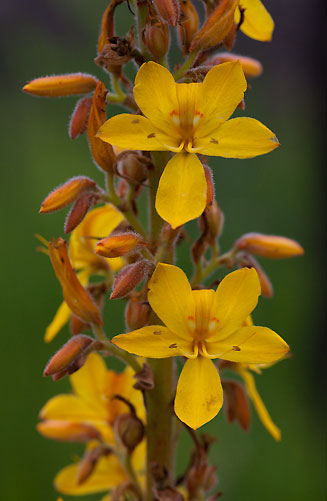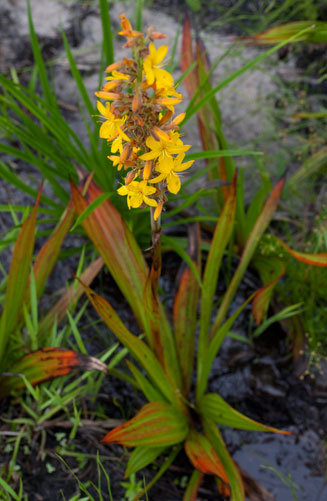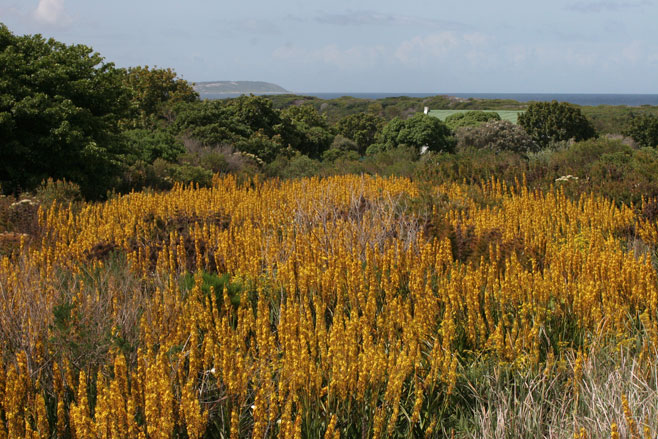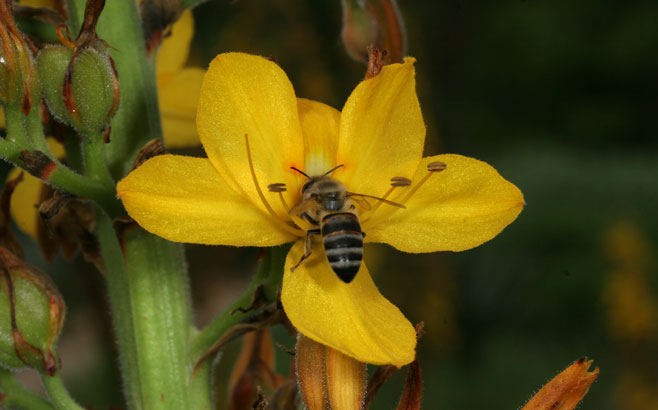Wachendorfia thyrsiflora
(Bloodroot, Red root)
Rooikanol [Afrikaans]
Life
> eukaryotes >
Archaeoplastida >
Chloroplastida
>
Charophyta > Streptophytina > Plantae (land plants)
> Tracheophyta (vascular plants) > Euphyllophyta > Lignophyta (woody plants)
> Spermatophyta (seed plants) > Angiospermae (flowering
plants) > Monocotyledons > Commelinales
> Family: Haemodoraceae
Widespread in fynbos
of the Western and Eastern Cape, occurring in marshes and along streams, growing
to 1-2 m high. The rhizome has bright red flesh (hence the common names)
and is used to produce a reddish brown dye.
 |
 |
|
Wachendorfia thyrsiflora flowering on the
Tsitsikamma Hiking Trail, Western Cape, South Africa. [photos
H.G.
Robertson, Iziko ©] |
 |
|
Wachendorfia thyrsiflora, Kogelberg
Biosphere Reserve, Kleinmond, Western Cape, South Africa. [photo
H.G.
Robertson, Iziko ©] |
|
 |
|
Honeybee (Apis mellifera) pollinating
Wachendorfia thyrsiflora at Kirstenbosch Botanical Gardens, Cape
Peninsula, South Africa. [photo
H.G.
Robertson, Iziko ©] |
Wachendorfia thyrsiflora is
by far the tallest of the four Wachendorfia species, usually
growing to a height of 1-2 m. Plants grow in seasonally or permanently
waterlogged soils in fynbos from Clanwilliam through to Humansdorp, often
dominating entire flood plains of lowland streams and producing a mass of
yellow flowers from September to December.
Flowers last for less than a day but do not open
simultaneously so that during the flowering season there are usually a few
flowers open on each pannicle.
The red-coloured flesh of the rhizome is
characteristic of all four species and is used to make a reddish brown
dye.
|
